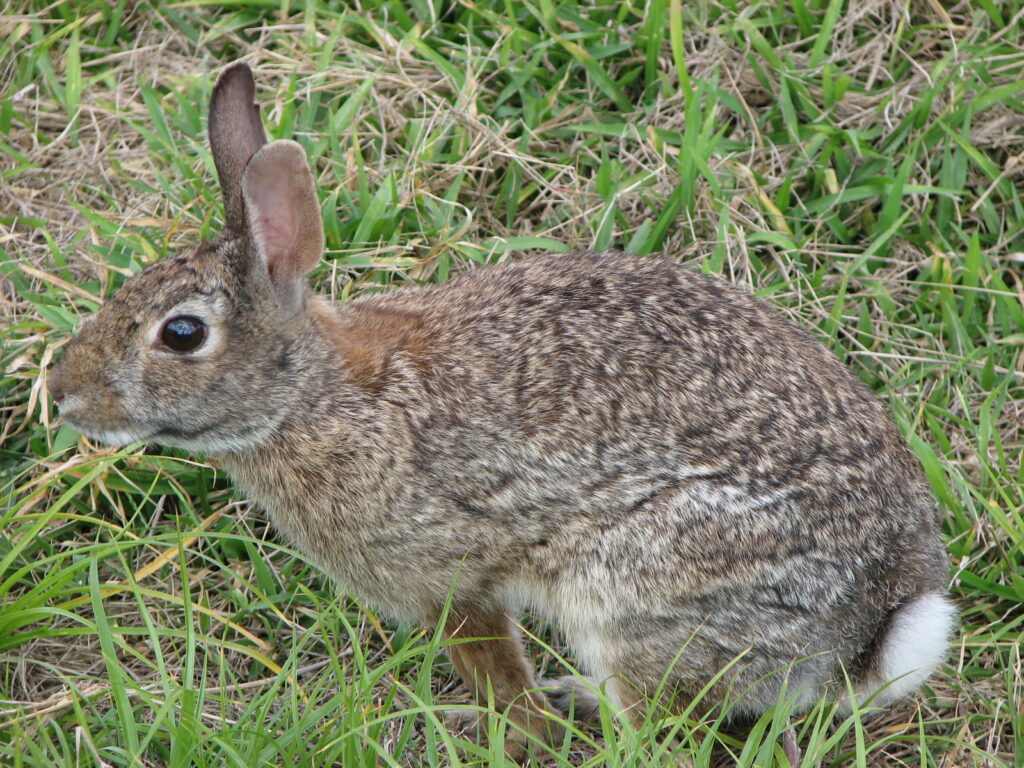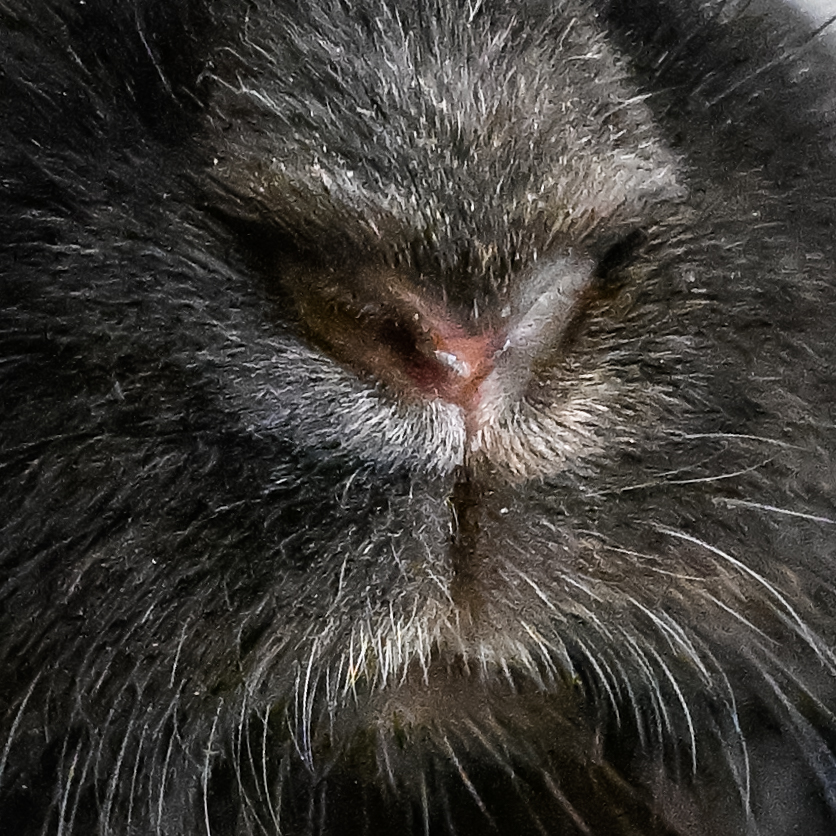Courtesy of the Humane Society of the United States
Rabbit damage is almost always the result of their appetite for our plants. They eat flower and vegetable plants in spring and summer and the bark of fruit and ornamental trees and shrubs in the fall and winter.
What attracts rabbits to urban areas?
There are several species of wild rabbits–most are called cottontail rabbits–who, between them, live across most of North America. Cottontails like to live at the edges of open areas. In fact, they are rarely found in dense forests or open grassland.
This love of edges means they love our suburbs. Yards, parks, playgrounds, and office parks, often with small natural buffers in between, have lots of edges between small areas of different habitats that rabbits love.
Common problems and solutions
Here today, gone tomorrow is one way to describe rabbits in suburbia. Given the many predators who make meals of rabbits, their populations can rise and fall dramatically over the course of a year. Sometimes, by doing nothing and letting nature take its own course, the homeowner sees the same result as they might from trying to “control” rabbits.
Deer eat many of the same things rabbits do and are also common around yards. Twigs browsed by rabbits look neatly clipped but plants browsed by deer appear ragged and torn. You may see the easily recognizable tracks of rabbits in soft soil or snow. And you may see the rabbits themselves–a dead giveaway to their presence–most often near dawn and dusk.
Barriers for flowers and vegetables: A well-constructed fence is the most effective way to protect plants. Two-foot high chicken wire supported by posts every six to eight feet is strong enough to keep rabbits out. Stake the bottom securely to the ground to prevent rabbits from pushing underneath it.
Movable fence panels can protect the garden right after the first planting, when damage is likely to be most severe, and go in the shed the rest of the year. Some years, you won’t need the panels at all, given the ups and downs of rabbit populations. New plantings can be protected individually under plastic jugs that have the bottom cut out. These also serve as mini-greenhouses in spring when nights are still cool. Other protection may need to be provided once the jugs come off.
Barriers for trees: Commercial tree wrap or plastic tree guards can keep rabbits from nibbling bark. Cylinders of hardware cloth (stand on their own) or poultry wire (need staking) can work as well. These barriers should be as high as usual snow depth plus eighteen inches. Young trees and saplings are more vulnerable so focus on protecting them.
Rabbits may reach low-hanging branches. A homemade barrier can encircle around them as well. Or prune and leave the trimmings on the ground away from valued trees as a decoy food. Rabbits prefer twigs and buds to the bark of the trunk and will eat these instead if they are easy to reach.
Repellents: In some places, fencing won’t be practical or damage will be so slight that a fence isn’t cost effective. Then chemical repellents can protect small plots and individual plants. Don’t use a repellent on plants that people will eat unless the label specifies it is safe to do so.
Scare Devices: Sometimes, scare tape or balloons might frighten rabbits away from an area. The pinwheels sold to repel moles might provide a look scary to rabbits as well.
Habitat Modification: Remove cover (vine thickets, tall grass, and shrub cover) around gardens and orchards so rabbits don’t have escape cover. They will spend less time (and eat less food) where they feel unsafe. Think, however, about the potential negative effects on other species that could benefit from a naturalized back yard.

